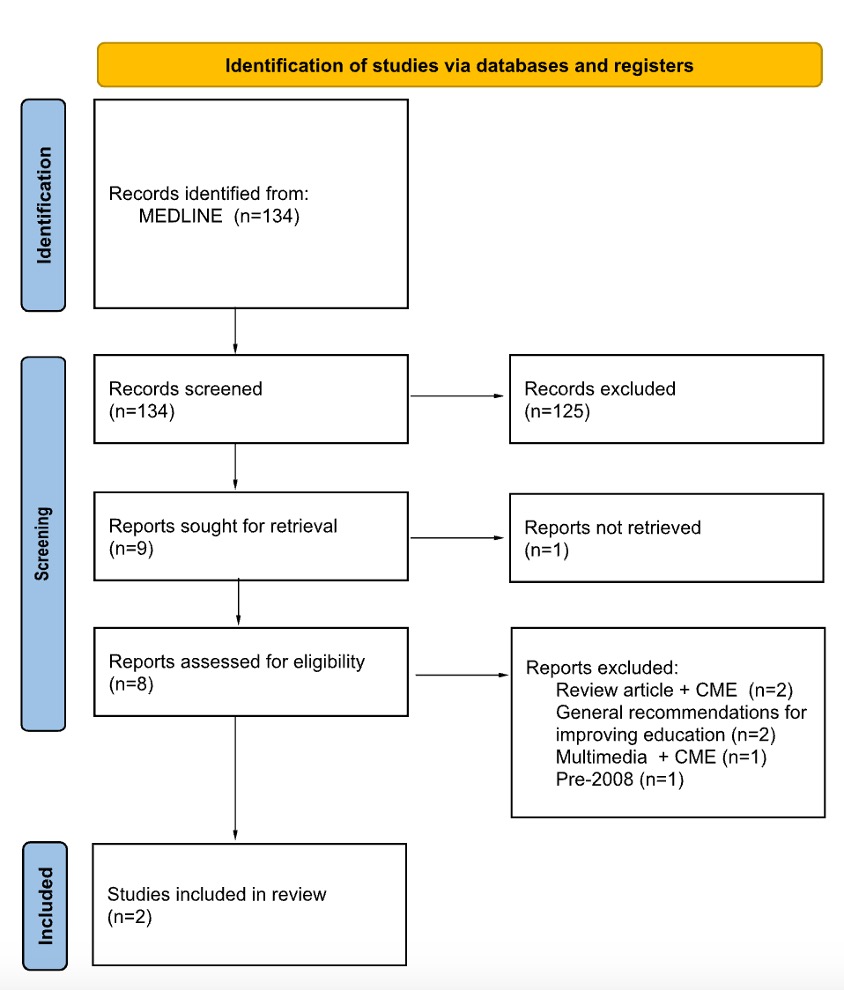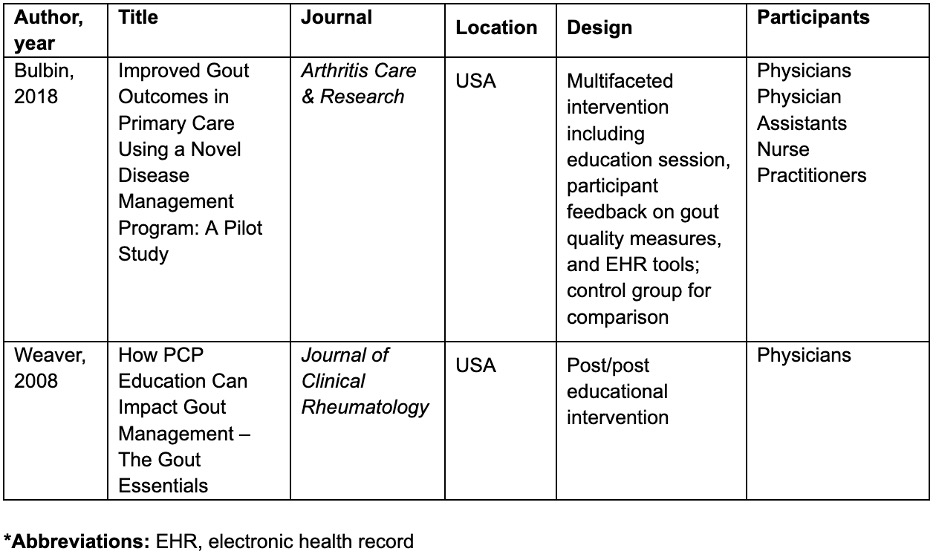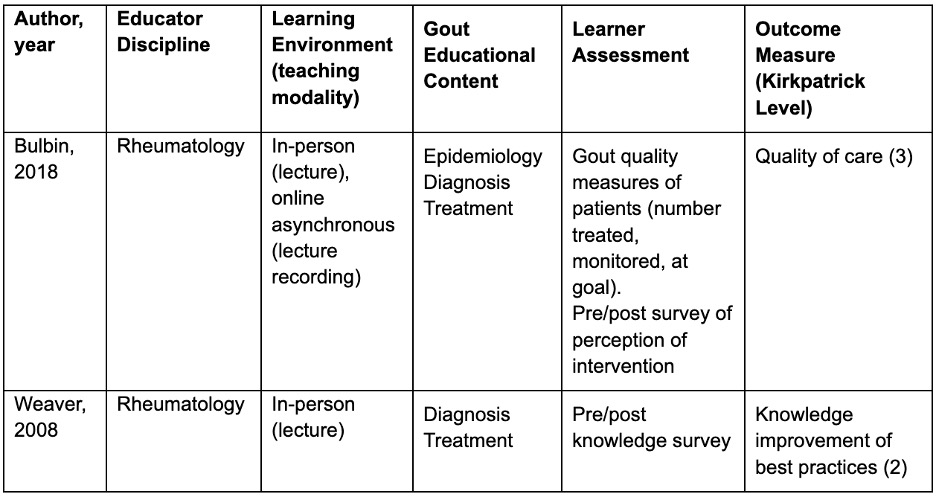Session Information
Session Type: Poster Session B
Session Time: 10:30AM-12:30PM
Background/Purpose: Gout is the most common inflammatory arthritis. Despite widespread availability of effective therapies and management guidelines from ACR and EULAR, many gout patients remain inadequately treated. Given the high prevalence of gout coupled with a limited rheumatology workforce, the diagnosis and management of gout often falls to primary care clinicians (PCCs). To better prepare PCCs for this growing role, numerous calls have been made for targeted continuing professional development (CPD) to guide PCCs in the optimal treatment of gout. Our aim was to conduct a scoping review to identify what literature exists regarding CPD and/or education programs for PCCs on the topic of gout.
Methods: Following the scoping review (ScR) methodology informed by Arksey and O’Malley and in collaboration with a research librarian, we developed a full ScR protocol to search databases from 2008 to present. A preliminary search of our primary database, Medline (Ovid), served as a pilot. Articles relevant to gout education for PCCs with original manuscripts available in English were included for review. We excluded those describing education for medical trainees or patients and caregivers, and independent review articles offering continuing medical education credit if these did not describe any other intervention. Each article was screened and reviewed independently by two authors and disagreements were resolved in discussion with a third author. Two authors (MO, AB) performed data extraction of each included article.
Results: Our MEDLINE search identified 134 articles for title/abstract screening, of which 8 full texts were reviewed for eligibility and 2 were identified for inclusion (Figure 1). Both articles were published in rheumatology journals from the United States (Table 1). Both included a pre/post intervention design with 1 utilizing a control group and an in-person/live educational component. One study examined post-intervention gout quality measures (proportion of patients treated, monitored, and at goal) while the other tested post-intervention diagnostic and treatment knowledge based on established guidelines (Table 2). Each paper included a description of the intervention, but neither provided details of the curriculum sufficient to inform future educational efforts.
Conclusion: While there is a well-established need for gout CPD for PCCs in the literature, these preliminary data suggest there is a lack of published education interventions. This gap is important because we have little evidence that training experiences are being examined in a way that increases our knowledge about the effectiveness of our educational innovations. PCCs are likely to continue playing an increasing role in the management of gout. Collaboration between educational leaders in rheumatology (content experts) and primary care (context experts) to co-create CPD may lead to new methods for teaching and learning tailored to PCCs, and new models of care for patients with gout. In addition to developing and implementing these programs, critical examination of educational innovations and dissemination of findings through peer-reviewed scholarship is essential.
To cite this abstract in AMA style:
O’Sullivan M, Battistone M, Kunkel G, Raphael K, Howes L, Schlesinger N, Barker A. Gout Education for Primary Care Providers: A Scoping Review [abstract]. Arthritis Rheumatol. 2024; 76 (suppl 9). https://acrabstracts.org/abstract/gout-education-for-primary-care-providers-a-scoping-review/. Accessed .« Back to ACR Convergence 2024
ACR Meeting Abstracts - https://acrabstracts.org/abstract/gout-education-for-primary-care-providers-a-scoping-review/



